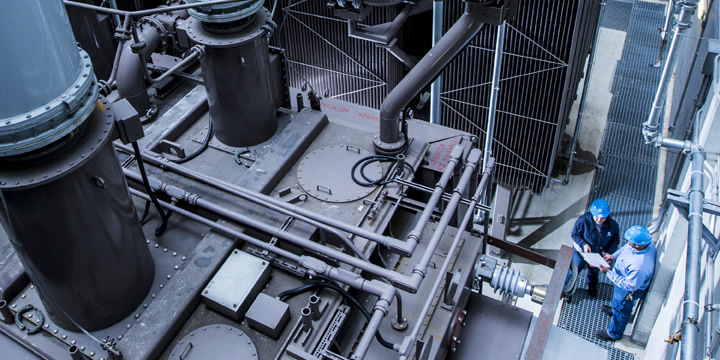Heat Wave

CERC Takes on the Heat
During the summer of 2012, the New York region was subjected to an interval of exceptionally hot weather. Soaring temperatures coupled with high humidity drove increased energy demand in the service territories of Con Edison’s regulated utility companies. To help ensure service reliability and cope with heat-related contingencies, both Con Edison of New York and Orange and Rockland had prepared in advance, by making substantial investments in energy-delivery infrastructure. At the tactical level, company employees were available to respond quickly and effectively to heat-related service interruptions.
Preparation
Historically, electrical demand for Con Edison of New York and Orange and Rockland service territories peaks during summer. To accommodate this seasonal rise in consumption, Con Edison invested $1.2 billion for system improvements for 2012. This year’s electric delivery improvements included $928 million for cables, transformers, and network protectors; $34 million for transmission upgrades; and $208 million for new substation installations and related equipment.
Both Con Edison of New York and Orange and Rockland have well-developed contingency plans for responding to heat events, and these were mobilized on a number of occasions during 2012.

Response
In anticipation of any three-day interval when temperatures are expected to exceed 96 degrees, Con Edison of New York implements a Corporate Emergency Response Command (CERC) protocol. A CERC consists of representatives from every operating and support group in the company gathered into a single command center, using the Incident Command System, and coordinating all resources needed to maintain safe, reliable operations throughout any event. At Orange and Rockland, heat watches are announced when extended high temperatures are expected. During a heat watch, field crews focus primarily on emergency work, with normal work being performed as system conditions permit. The advisory also means that distribution system engineers closely monitor the loads on distribution circuits, transformer banks and other key system components to detect any heat-related issues so these can be addressed quickly.
In addition, Con Edison of New York and Orange and Rockland carry out an active outreach campaign to communicate with customers during heat events. Frequent updates are provided on company websites, and advisories are provided to local media to inform customers in neighborhoods that may be subjected to voltage reductions. Customers are also asked to cooperate by minimizing energy use and are encouraged to avoid using nonessential appliances.
Company websites and other communications channels are used year-round to encourage conservation. Both of Con Edison’s regulated utility companies offer a range of energy-saving programs and incentives for residential, commercial, and institutional customers. By adopting conservation and energy-efficiency measures, customers can save money and also help system reliability during summer weather extremes.

